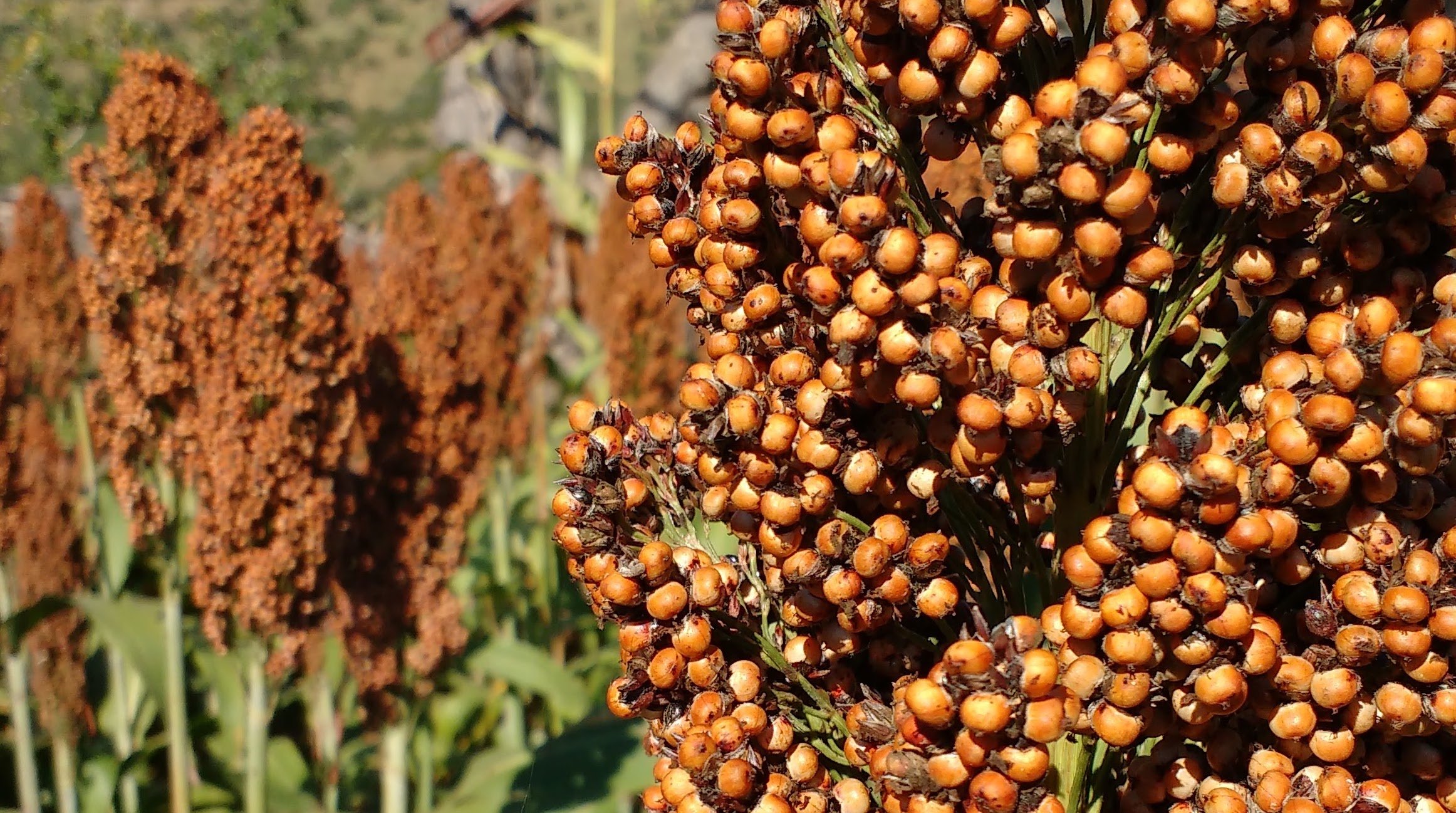
sorghum is an indigenous, African grain that is naturally adapted to irregular rainfall & poor soils
Northern Rhodesia Crop Distribution 1938
Source: Maps & Geospatial Data, Princeton University Library
1930’s
As an indigenous grain, historically sorghum was widely cultivated across Zambia. This map from 1938 shows that almost 100 years ago sorghum & millet were widely cultivated.
Sorghum was the dominant crop in Central, Eastern & North Western Zambia (shown in pink)
In Southern Zambia Sorghum was often cultivated in combination with either Maize on the plateau (orange areas) or with millet in the Zambezi valley (purple areas).
Millet was the dominant crop in Western Zambia (blue)
1970’s
In Participatory Rural Appraisals (PRA’s) conducted by CARE in Kazungula District in the 1990’s farmers described how sorghum & millet were still the dominant crops grow in the 1970’s. Farmers grew a large number of local sorghum varieties but many of these local varieties were long-maturing and with changes in rainfall patterns local varieties often gave low yields.
Varieties grown included: lindundo, makoto, sindeketi, siazibola, sikingi, nkuse, dekenya, muchinga, situba. Of all these local varieties they prefered makoto because they said it was drought tolerant. However, kuyuma, which is an improved variety, was also beginning to be grown in the area and was widely liked.
1990’s
In these same Participatory Rural Appraisals (PRA’s) farmers described that by the 1990’s maize had become the dominant crop. When they were asked the reasons for the change from sorghum production in the 70’s to maize in the 90’s farmers said that this trend was influenced by:
loans given in the 1980’s were mainly for maize seed & fertiliser,
maize is more easily sold compared with sorghum,
even relief food is in the form of maize.
Farmers said they had to switch to growing more maize “in order to fit well with the system”
The Sorghum Advantage
This video from the North American Millet Alliance provides a great introduction to the advantages of sorghum in adapting to drought & heat. Key advantages include:
Deeper Rooted than maize so it can “mine” water from the soil profile
Reduced transpiration rates at vapour deficit conditions by mid-day closure of stomata
Epicuticular Wax reflects solar radiation & reduces water loss
2/3 of sorghum yield increases in the USA since the 1970’s were due to improvements in agronomy



